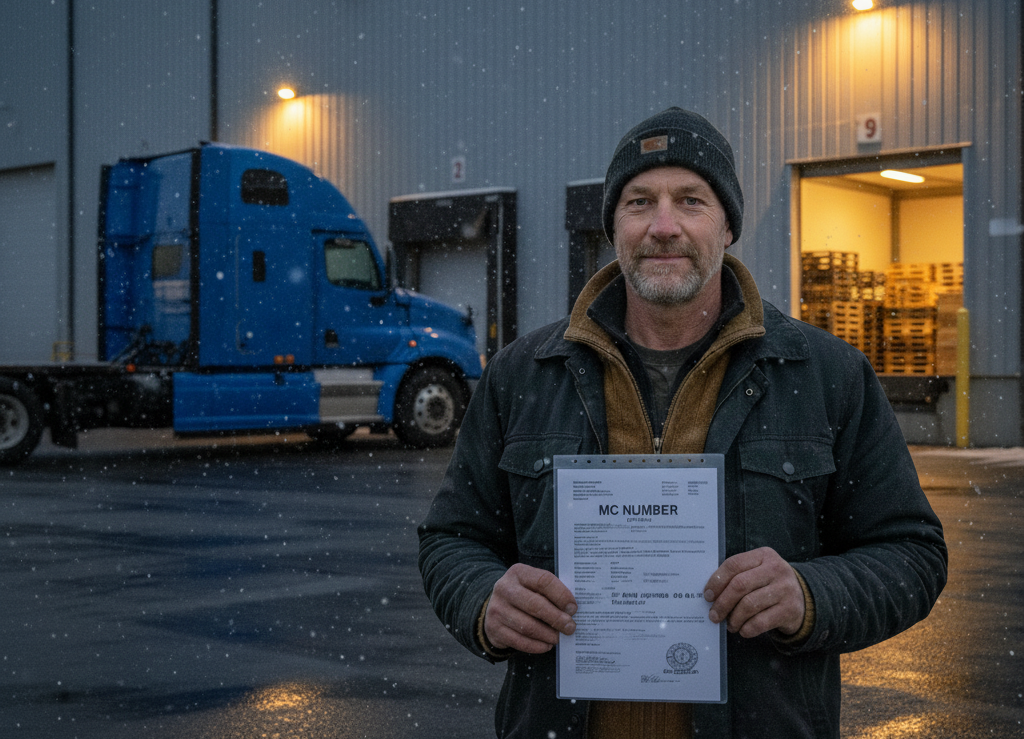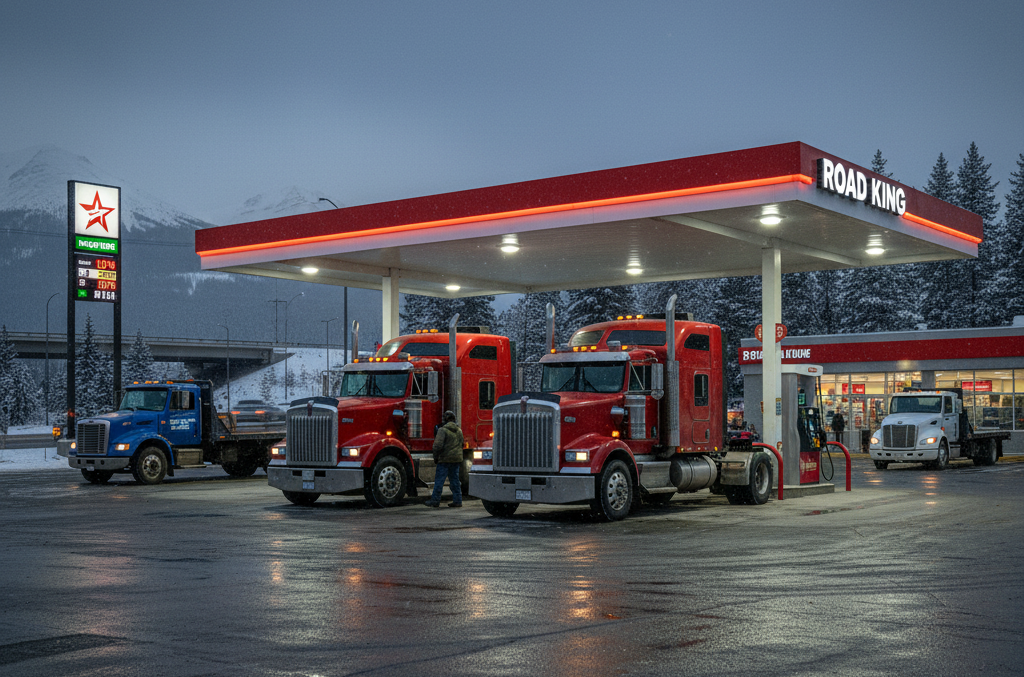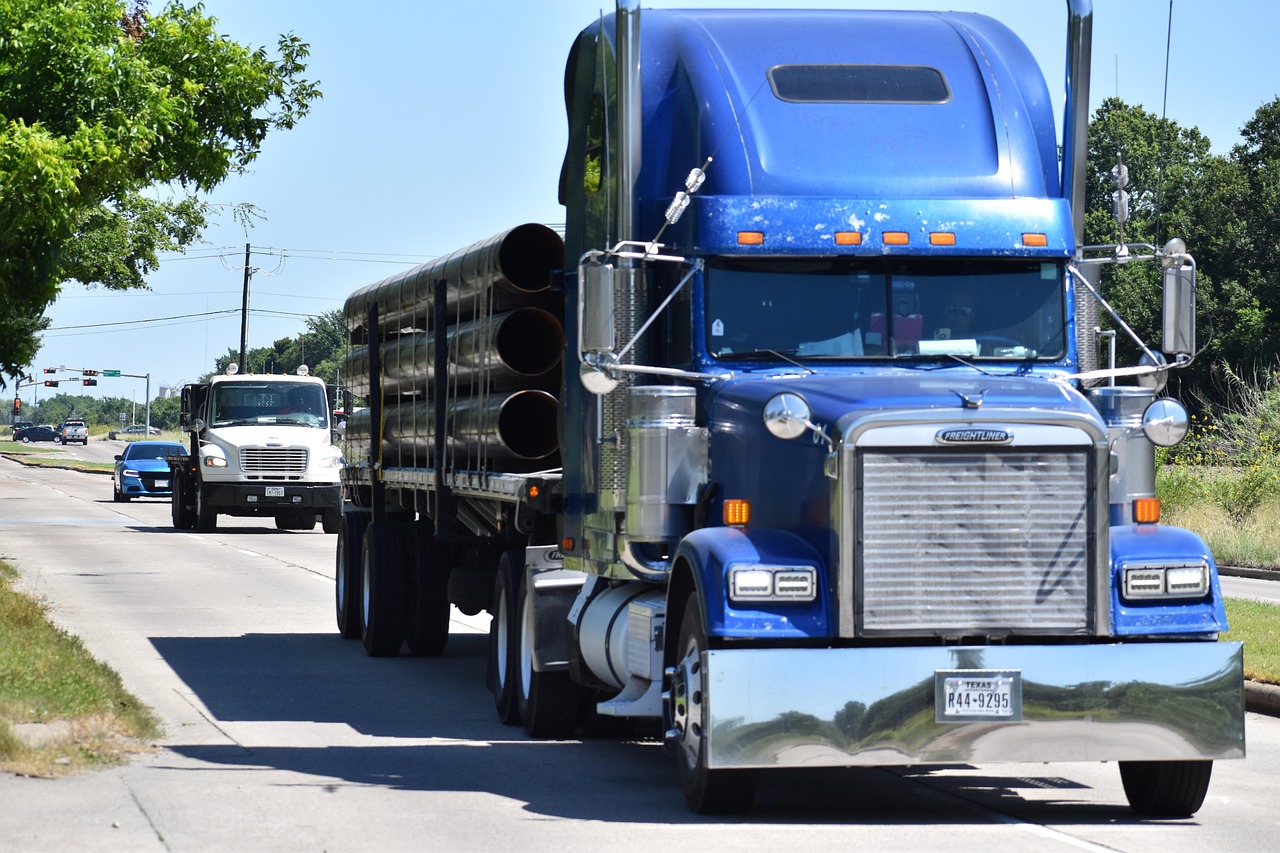What is a Trucking Business Plan?
A business plan for a trucking company is a foundation that helps you establish and run a successful company. This should reflect your company’s vision, goals, and mission.
Whether you’re launching a new company or expanding an existing one, a business plan is essential. When you create a business plan, you must consider various aspects. This involves the cargo type you plan to ship, the markets you plan to serve, and the size of your fleet. In addition, the plan should address key aspects of your business, such as staff hiring, vehicle maintenance, or regulations compliance.
The business plan for a trucking company also delves into financial aspects. This covers startup costs, projected income, and operating expenses. It helps you manage cash flow, secure necessary financing, and ensure profitability.
A solid business plan and its main aspects are essential for the trucking business, identifying potential challenges, setting goals, and developing strategy.
Why Do You Need a Trucking Business Plan?
This is an essential tool for any company that helps you ensure success and stability. It maintains your success and identifies ways to overcome potential challenges. With a well-prepared plan, you can navigate the trucking industry easily and burden-free.
The reliable trucking business plan should:
- Clarify your vision and goals. A trucking business plan allows you to define your vision and goals. In this meaning, a plan serves as a roadmap, guiding you as you operate the company. It helps you make decisions and align with the overall strategy of your company.
- Secure financing. A plan can help you secure loans and make your company more attractive to investors. A trucking company business plan should include financial projections, outline the use of funds, and show potential returns.
- Identify potential challenges. A business plan helps define potential challenges and outline strategies to combat them. With a market analysis and review of the competition, you can develop a reliable strategy.
- Guide operational decisions. This is a reference point for business decisions. Whether you’re launching a new company, entering new markets, or expanding your fleet, the plan should provide a solid framework for that.
- Support growth and expansion. As you develop the business, your plan helps you stay aligned with your goals. In addition, you should update the plan to comply with the current market state.
How to Create a Trucking Business Plan in 10 Steps
Developing a business plan can be challenging, as it requires attention to multiple aspects. You can divide the process into smaller steps to simplify it.
Here’s 10 steps that ensure a launch of a reliable business plan for a trucking company.
Step 1: Executive Summary
This is the first step a reliable pllan should include. The executive summary includes an overview of your company, its main activities, and strategies.
In this section, you should also describe your service portfolio. This may include oversized cargo delivery, handling hazardous materials, or short-haul shipments.
Step 2: Company Overview
This section provides more details on your company. This section should start with your business name, location, and the type of your business’s legal structure.
You also can describe the history of your business. If you’re starting a new business, outline your motivation and previous experience. This section also includes a description of the services, including the cargo types you handle, your routes, and any additional services.
The company overview also highlights the benefits of your company that highlight it across the market. This can refer to your modern equipment, customer services, or your experience in handling specific freight.
Step 3: Industry Analysis
The step should provide an understanding of the trucking industry. Define the current state of the industry, key trends and strategies, new regulations, and projections. In particular, it can be the increased demand for reefer trucking or innovative technologies.
You should also study the existing regulations that cover the trucking sector. For a successful trucking business, you must ensure adherence to Hours of Service (HOS) rules, ensure valid Commercial Driver’s License (CDL), and proper insurance. Understanding the sector regulations and standards is essential to comply.
Step 4: Competitor Analysis
For this step, conduct a thorough analysis of your main competitors, their benefits, and weaknesses. Make a list of your direct competitors. It can be trucking businesses that provide similar services or serve the same routes.
For each business, consider such facts as the pricing strategy, service quality, customer base, and market presence. You also can review their online presence. Across these aspects, define their strengths and weaknesses. This helps outline the growth strategy to ensure you provide better services.
You can also analyze companies that are your indirect competitors, such as rail or freight transportation companies.

Step 5: Customer Analysis
In this section, you should define your target market. Explore your customers’ pain points and needs. In particular, if they need timely delivery, lower shipping costs, or specific transportation services. With this analysis, you can position your trucking company as the suitable solution for them.
Outline how you plan to reach and communicate with your clients. This can involve online marketing, engaging brokers, or direct sales offers.
Step 6: Sales and Marketing Strategy
This aspect defines how you will attract and retain your customers. First, define your pricing strategy to reflect market positioning and the value your services provide. Decide how you will promote your company on the market. It can be digital marketing strategies, print ads, email marketing, and attending industry events.
The other critical point is your sales process. Whether you plan to create a sales team or use online platforms to reach your clients, outline these steps. The analysis should include all aspects, from lead generation to closing deals.
You should also develop customer retention strategies. Will it be loyalty programs, high customer service, or constant customer satisfaction?
Step 7: Operational Plan
The operational plan describes your daily operations. It’s based on the size of your operations, the type of operated trucks and their capacity, and any special equipment. Decide how you want to manage your fleet, including maintenance schedules, fuel management, and compliance with regulations.
Driver management is another key aspect. Outline how you will hire, train, and restrain your specialists. Address any challenges related to shortage and how to overcome them.
Step 8: Management Team
In this section, introduce the key members of your management team. Provide brief bios of each team member, including their experience in the trucking sector or related industries. This part also outlines the responsible persons for different aspects and the decision-making process.
A strong management team is essential for successful operations, demonstrating wise and knowledgeable management of your company.
Step 9: Financial Projections
Financial projections should include a financial outlook for the next several years. Start with income statements and projections of your revenue, expenses, and profits.
Ensure you included assumptions on such factors as fuel prices, driver wages, and maintenance expenses.
Then, provide cash flow statements that show how money will flow through your business. Thus, you can understand your company’s liquidity and ensure you have enough funds.
As the final step, identify your costs and funding needs. If you plan to seek funds outside the company, define how mush you need, how you use these funds, and how you repay the loans.

Step 10: Implementation and Milestones
The final step of setting a business plan for a trucking company is to outline your implementation steps and key milestones. The section includes how you will implement the plan, including timing, objectives, and the required steps.
For that, break down the path to your goal. In particular, the goal to expand your fleet can include being broken into purchasing new trucks, hiring drivers, and securing new contracts.
Then, set milestones for each of the steps. This will help you track the progress. Milestones also ensure your business is on track and aligns with your strategy.
Finally, decide how you will measure success and make adjustments if needed. This can involve regular reviews of financial performance, customer feedback, and operational efficiency.
Common Mistakes to Avoid
When creating a business plan, it’s useful to know the common mistakes of similar companies in the sector. Thus, you can avoid common pitfalls and outline more effective strategy. It also will help you navigate the challenges of the industry.
- Unclear objectives. One of the common mistakes is setting unclear goals that affect the direction and focus of your plan. Define clear objectives for your company, including review targets, market expansion plans, and customer-attracting goals. The objectives should be realistic and aligned with your business plan.
- Superficial market research. Skipping careful market research can lead to a business plan that doesn’t align with the industry realities. Knowing market trends, customer needs, and your main competitors is crucial.
- Overestimated revenue expectations. You can be optimistic about your earnings. However, increased revenue projections lead to unrealistic expectations. You should base on thorough market research and realistic assumptions as you outline financial projections.
- Underestimating expenses. Failing to project initial costs can lead to financial issues. You should analyze maintenance, fuel, insurance, and compliance costs.
- Absence of marketing strategies. Some business plans focus on operations and finances, not including a marketing strategy. Your business should have a clear plan for attracting customers with detailed sales and marketing plans. Without it, your business may struggle to grow.
- Neglecting to update the plan. The trucking industry is dynamic and evolving constantly. Thus, preserving the initial business plan is one of the common mistakes. Regularly review and update your business plan to reflect the current state of the industry.
- Non-compliance with regulations. Violations of the legal or regulatory aspects of the trucking sector lead to significant issues and obstacles. Your business plan should ensure your compliance with industry standards, like proper permits or Hours of Service (HOS) rules.
Tools and Resources
The complex process of creating a business plan can be easier with the right tools and resources. In particular, you can use innovative technologies or solutions to simplify the process and develop an effective trucking company business plan.
- Business plan software. This can simplify creating a plan with provided templates, step-by-step guidance, and financial forecasting tools. The popular options for this are LivePlan, Bizplan, and Enloop.
- Financial planning tools. Your business plan should include accurate financial projections. These tools make it easier to manage your finances and include accurate data in your business plan. Examples of these tools are QuickBooks, FreshBooks, or Excel spreadsheets.
- Industry research resources. The key to outlining a reliable business plan is understanding of the trucking industry. You can follow such resources as the American Trucking Association (ATA), IBISWorld industry reports, or websites of governmental organs like the Federal Motor Carrier Safety Administration (FMCSA). They gather data on market trends, price ranges, regulations, and competition.
- Compliance tools. The essential aspect of any trucking company is adherence to industry regulations. Tools like MyTrucking or KeepTruckin can help you stay compliant. In addition, you can consult with a legal advisor to prevent any violations.
- Marketing and sales tools. Effective marketing is crucial, helping you build the sales and marketing strategies. The tools assist with customer outreach, lead generation, and tracking effectiveness. You can use such tools like HubSpot, Mailchimp, or Google Analytics.
- Consulting services. If you need additional support and advices, you can hire a business consultant experienced in the trucking industry. they can provide their expertise, help you update your plan, and offer insights for best practices.
Conclusion
In the competitive trucking sector, a solid business plan is fundamental. It clarifies your objectives, guides operational decisions, and supports your growth. As you follow the essential steps, you can avoid common mistakes and ensure a solid basis for your company.
With the right recourse and tools, you can develop a trucking business plan that will ensure your success and competitiveness. Remember to update your plan to align with the constantly evolving trucking industry.




